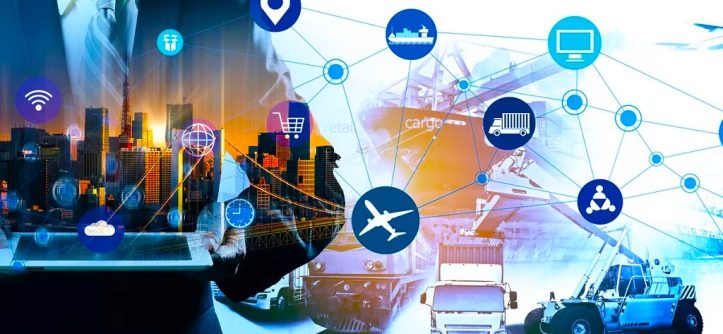In today’s interconnected world, the journey a product takes from raw material to your doorstep can be complex. Ever wondered where that shirt you ordered online is, or why there might be a delay in getting that new appliance? The answer lies in the supply chain, a vast network of people, companies, and processes that bring goods to market.
What is Real-Time Tracking and Why Does it Matter?
Real-time tracking is the ability to monitor the movement and status of goods throughout the supply chain as it happens. This goes beyond traditional methods like waiting for a delivery notification. Imagine having a virtual window into your supply chain, allowing you to see exactly where your product is, its estimated arrival time, and even any potential delays.
Here’s why real-time tracking is becoming increasingly important:
- Enhanced Transparency: Real-time data empowers both businesses and consumers. Businesses gain a clear picture of their supply chain efficiency, while consumers can track their orders with greater accuracy.
- Proactive Problem Solving: Imagine a shipment encountering unexpected weather or a traffic jam. Real-time tracking allows companies to identify these issues proactively and take corrective measures, minimizing disruptions.
- Improved Customer Satisfaction: Knowing exactly when to expect a delivery translates to a happier customer. Real-time tracking fosters trust and reduces the frustration of waiting in the dark.
- Reduced Costs: By pinpointing inefficiencies and preventing delays, real-time tracking can help businesses optimize their supply chains, leading to cost savings.
How Does Real-Time Tracking Work?
The magic behind real-time tracking lies in a combination of technologies:
- GPS Tracking: Devices attached to goods provide real-time location data, allowing you to see a product’s physical movement.
- Sensor Technology: Sensors can monitor environmental conditions like temperature or humidity, crucial for products requiring specific storage or transportation environments.
- Internet of Things (IoT): By connecting devices and sensors to the Internet, real-time data can be collected and transmitted to a central platform for analysis and visualization.
- Data Analytics: Advanced software analyzes the collected data, providing insights into potential issues and optimizing delivery routes.
Related: What are Good Business Ideas: Lucrative Ventures Unveiled
Benefits Beyond Tracking Packages
While real-time tracking is often associated with package delivery, its benefits extend far beyond the final mile:
- Inventory Management: Real-time visibility into inventory levels across warehouses allows for better forecasting and stock optimization.
- Production Planning: Knowing the exact location and delivery time of raw materials enables manufacturers to plan production schedules more effectively.
- Risk Management: Real-time tracking can help identify potential disruptions in the supply chain, such as political unrest or natural disasters, allowing companies to take steps to mitigate risks.
The Future of Real-Time Tracking
As technology evolves, we can expect even more sophisticated real-time tracking solutions. Artificial intelligence (AI) will play a bigger role in analyzing data and predicting potential issues. Blockchain technology, with its focus on secure data sharing, has the potential to further revolutionize supply chain transparency.
Real-time tracking is not just about knowing where your package is; it’s about gaining control and visibility over a complex system. By embracing this technology, businesses can build more resilient and efficient supply chains, ultimately leading to a smoother and more satisfying experience for everyone involved.
Related: How I Built My Solar Business From The Ground Up
Supply Chain Visibility FAQ
What is Supply Chain Visibility?
Supply chain visibility refers to a company’s ability to track the movement of goods and materials throughout its entire supply chain. This includes everything from raw materials to finished products, all the way from suppliers to customers. In essence, it’s having a clear picture of what’s happening at every stage.
Why is Supply Chain Visibility Important?
There are several reasons why supply chain visibility is crucial for businesses today. Here are a few key benefits:
- Improved Efficiency: By knowing where everything is in the supply chain, companies can identify bottlenecks and optimize inventory levels. This leads to smoother operations and reduced costs.
- Enhanced Customer Service: With real-time tracking, businesses can provide accurate delivery estimates to customers and proactively address any potential issues. This translates to happier customers.
- Reduced Risk: Supply chain disruptions can happen due to various factors. Visibility allows companies to anticipate and mitigate these risks, ensuring a more resilient supply chain.
- Better Decision-Making: Data-driven insights from a visible supply chain empower businesses to make informed decisions about production, sourcing, and logistics.
How Can Businesses Achieve Supply Chain Visibility?
Several technologies and strategies can help businesses gain better visibility into their supply chains. Here are some common approaches:
- Supply Chain Management (SCM) Software: These software solutions integrate data from various sources across the supply chain, providing a centralized view of inventory, shipments, and other critical information.
- Internet of Things (IoT): IoT devices like sensors and RFID tags can track the movement of goods in real time, providing granular location data.
- Cloud-Based Platforms: Cloud-based platforms offer scalability and accessibility, allowing businesses to share data seamlessly with partners and suppliers.
Overall, supply chain visibility is no longer a luxury but a necessity for businesses operating in today’s complex global market.




Leave a Reply